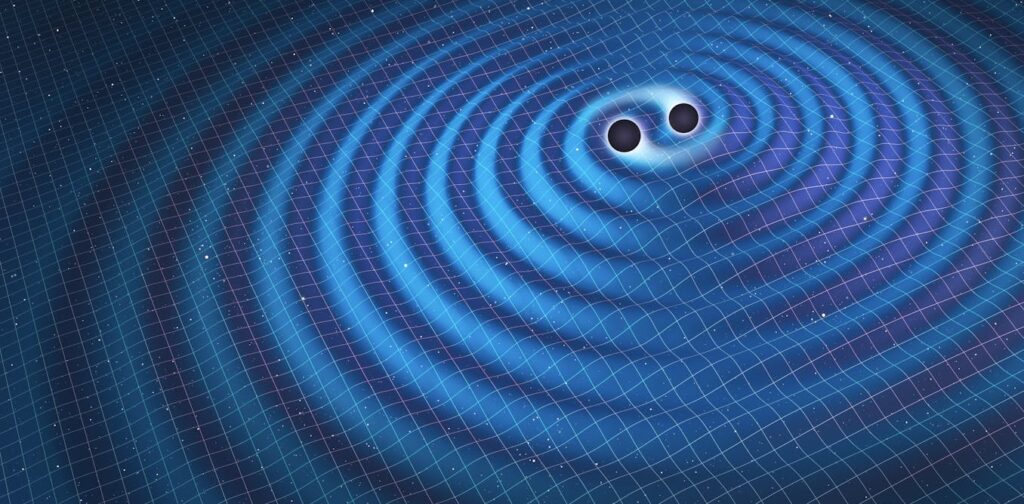
In September 2015, scientists made a groundbreaking discovery that would redefine our understanding of the cosmos: the detection of gravitational waves. These ripples in spacetime, first predicted by Albert Einstein over a century ago, were observed emanating from the merger of two black holes. This historic event marked the culmination of a 100-year quest and opened a new window into the universe.
Two years later, in August 2017, another milestone was reached when gravitational waves were detected alongside electromagnetic waves from the merger of two neutron stars. This dual detection offered a richer understanding of such cosmic events, allowing scientists to observe phenomena that do not emit light, thus unveiling the universe’s hidden aspects.
Fast forward to the summer of 2025, and the LIGO, Virgo, and KAGRA collaboration has announced a new series of discoveries following extensive upgrades to their equipment. These include the clearest gravitational wave detection to date, providing an unprecedented view of the universe.
The Science Behind Gravitational Waves
Gravitational waves are ripples in spacetime caused by the acceleration of massive objects, such as black holes and neutron stars, in a binary system. According to Einstein’s general relativity, these waves stretch and squeeze the fabric of space as they travel across the universe, minutely altering the distance between objects.
The detection of these waves requires highly sensitive equipment. The LIGO, Virgo, and KAGRA collaboration operates four observatories with L-shaped arms that span over two miles. These arms contain laser light that measures the distance between mirrors with extraordinary precision. As a gravitational wave passes, it changes this distance by a minuscule amount, allowing astronomers to glean information about the wave’s source.
Recent Discoveries and Their Significance
Between May 2023 and January 2024, the collaboration reported 128 new binary mergers, more than doubling previous counts. Among these was a neutron star-black hole merger, a rare event where a black hole tears apart a neutron star, potentially releasing electromagnetic waves. Although no such waves were detected this time, future observations may provide crucial data for understanding extreme cosmic conditions.
In July 2025, the collaboration announced the detection of the most massive binary black hole merger ever observed, with a combined mass exceeding 200 times that of our Sun. This discovery challenges previous assumptions about black hole formation and suggests new avenues for research.
The Impact of Clearer Observations
The most recent observation, announced in September 2025, is the clearest gravitational wave signal yet, a near replica of the first detection from a decade ago. Thanks to advancements in detector technology, this signal stands out significantly above the noise, confirming predictions of general relativity with greater precision.
“The final black hole emitted gravitational waves exactly as predicted, and the merger increased entropy, aligning with thermodynamic principles,” noted the collaboration in their announcement.
This discovery underscores the consistency of black holes with thermodynamic laws, as proposed by Stephen Hawking and Jacob Bekenstein, and highlights the intricate nature of cosmic interactions.
Looking Ahead: The Future of Gravitational Wave Astronomy
The ongoing fourth observing run of the LIGO, Virgo, and KAGRA collaboration is expected to yield over 100 additional discoveries by the end of the year. Looking further ahead, new observations starting in 2028 could bring the total count of binary mergers to as many as 1,000 by 2030, contingent on continued funding and technological advancements.
As gravitational wave astronomy continues to evolve, the potential for new insights into the universe’s most enigmatic phenomena grows. These discoveries not only enhance our understanding of cosmic events but also pave the way for future explorations into the fundamental laws governing the universe.
The journey that began with Einstein’s theoretical predictions has now entered a new era, where each gravitational wave detection brings us closer to unraveling the mysteries of the cosmos.





